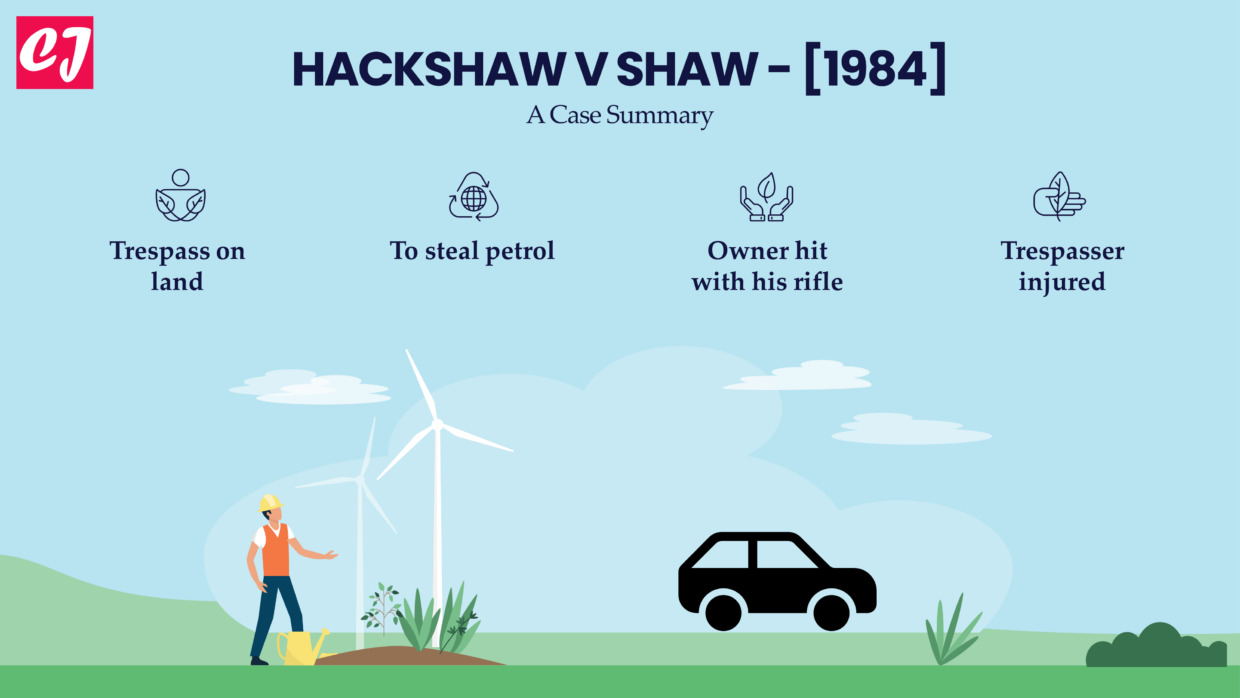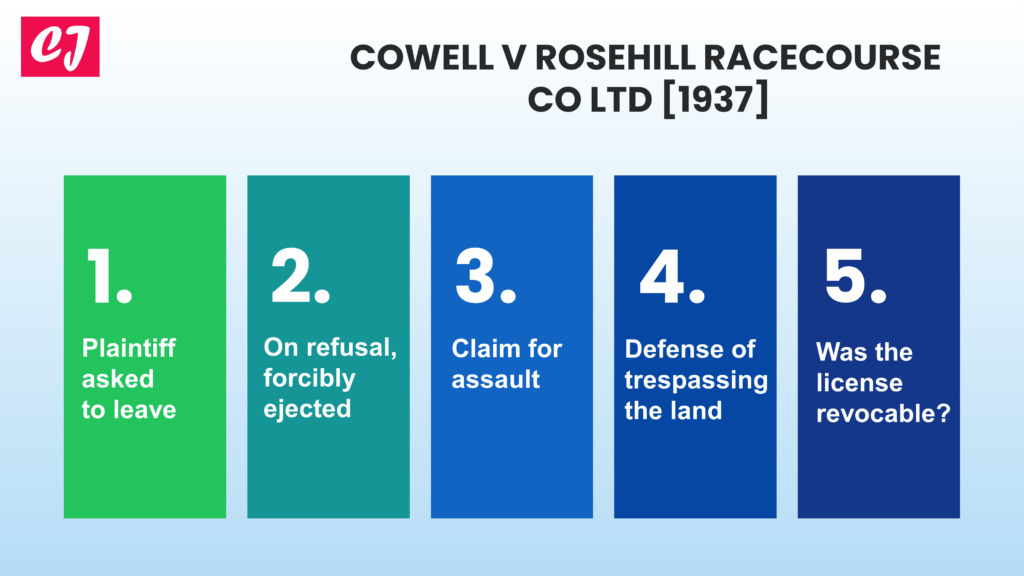
Hackshaw v Shaw [1984]: A Case Summary
Case name & citation: Hackshaw v Shaw [1984] HCA 84; (1984) 155 CLR 614
- The concerned Court: High Court of Australia
- Decided on: 11 December 1984
- The bench of judges: Gibbs C.J., Murphy, Wilson, Deane and Dawson JJ.
- Area of law: Negligence; Occupier’s liability; Duty of care; Trespass to land; Contributory negligence
What is the case about?
Hackshaw v Shaw [1984] is a tort law case that revolved around issues of negligence, trespass, and duty of care. It dealt with the question of whether an occupier of property can be held liable for causing an injury, though unknowingly, to a trespasser.
Facts of the case (Hackshaw v Shaw)
The defendant, Shaw, was the owner of a farm located at Korong Vale in Victoria. There was a petrol tank at the farm which was installed for refuelling any motor vehicles used on the farm. On many occasions, it was found that the petrol was stolen at night. Therefore, Shaw decided to lie in wait near the petrol tank to catch the thieves the next time.
One night, Cox, who was driving a stolen car, went to the defendant’s farm. He was accompanied by a sixteen-year-old girl, Hackshaw – the plaintiff. Cox turned off the headlights and began to steal petrol.
Shaw, not knowing that Hackshaw was in the car, fired two warning shots with his rifle at the vehicle. Unfortunately, Hackshaw was hit who was in the front seat of the car.
As a result, Hackshaw sued Shaw seeking compensation for her injuries.
Issues raised
The main issue that laid before the Court, in this case, was whether Shaw could be held liable for the injuries sustained by Hackshaw.
Did Shaw owe a duty of care to Hackshaw despite the fact that she trespassed on his land?
Was there a breach of duty when Shaw fired at the car?
Did Hackshaw contribute to her injuries by trespassing on the land?
Judgment of the Court in Hackshaw v Shaw
The Court decided that Shaw owed a duty of care to Hackshaw to avoid injuring her with his rifle. He should have reasonably foreseen the possibility of a passenger in the car and that firing the rifle at the car was an unreasonable and negligent action.
However, it was also found that since Hackshaw accompanied Cox in entering Shaw’s property without authorization, she had contributed to the injury.
Quotes from the case
Deane J. said as under:
“All that is necessary is to determine whether, in all the relevant circumstances including the fact of the defendant’s occupation of premises and the manner of the plaintiff’s entry upon them, the defendant owed a duty of care under the ordinary principles of negligence to the plaintiff. A prerequisite of any such duty is that there be the necessary degree of proximity of relationship.
The touchstone of its existence is that there be reasonable foreseeability of a real risk of injury to the visitor or to the class of person of which the visitor is a member. The measure of the discharge of the duty is what a reasonable man would, in the circumstances, do by way of response to the foreseeable risk.
Where the visitor is lawfully upon the land, the mere relationship between occupier on the one hand and invitee or licensee on the other will of itself suffice to give rise to a duty on the part of the occupier to take reasonable care to avoid a foreseeable risk of injury to him or her. When the visitor is on the land as a trespasser, the mere relationship of occupier and trespasser which the trespasser has imposed upon the occupier will not satisfy the requirement of proximity. Something more will be required.
The additional factor or combination of factors which may, as a matter of law, supply the requisite degree of proximity or give rise to a reasonably foreseeable risk of relevant injury are incapable of being exhaustively defined or identified. At the least they will include either knowledge of the actual or likely presence of a trespasser or reasonable foreseeability of a real risk of such presence.”
Refer full text of the case here: https://jade.io/article/67169
Conclusion
The given case clarifies that it is possible in legal contexts that an occupier of property can owe a duty of care to a trespasser. This duty arises if it can be established that it was reasonably foreseeable that the trespasser could be injured due to the negligent actions of the occupier.
Therefore, it can be said that in certain circumstances, a duty of care may be owed to individuals who commit the illegal act of trespass. Occupiers/owners may still have a duty to exercise reasonable care to prevent harm to trespassers if it is foreseeable that their actions could cause harm. Nevertheless, the existence and extent of duty shall depend on specific case facts, circumstances, legal standards, and precedents.
List of references:
- https://doylesconstructionlawyers.com/wp-content/uploads/2015/09/Hackshaw-v-Shaw.pdf
- https://s3.studentvip.com.au/notes/26548-sample.pdf
You might also like:
More from tort law:

